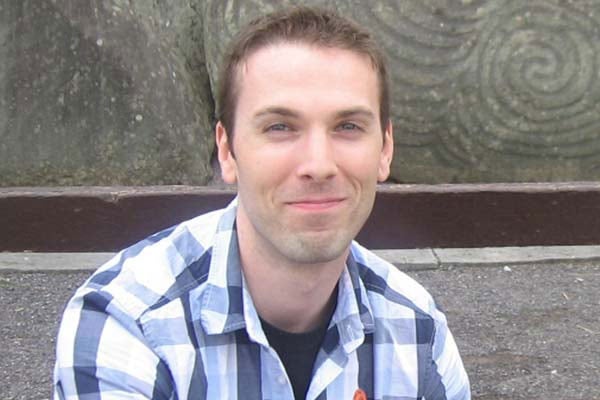
Grads to watch: entrepreneur James McCrae’s software innovates in style for the DIY community
Published: June 17, 2014
James McCrae dreams in 3D. Take his mind-expanding software JanusVR – which lets users visualize two dimensional web pages in three dimensions. Or his newest startup, FlatFitFab, which enables anyone to model their own coffee tables, dinosaur skeletons or anything else that can be fashioned from flat sections that fit together to result in cool things.
McCrae uses his passion for computer science and creation to empower others to see, make and do more in their world.
(Read more about JanusVR in U of T Magazine.)
“FlatFitFab has developed a model and educational design tool that allows you to create an on-line ‘Do-It-Yourself Design Structure’ that can be your next IKEA furniture, your next Home Depot widget or your next Lego set,” said Donna Shukaris, the commercialization manager working with FlatFitFab at U of T’s Innovations & Partnerships Office (IPO).
“The designs are unique in that they are made of flat pieces that can be fabricated into a 3D sturdy structure that you may want to sit on, play in the sand box or hold your glass of water.”
(Read more about FlatFitFab or download the software.)
U of T News caught up with McCrae before his convocation to find out more about what it’s like to make a business out of dreaming through reality.
What does your startup do?
I created “FlatFitFab”, 3D modelling software that allows the creation of planar section models (“Flat”), ensures that they can be assembled, will stand, and can withstand the rigour of being a physical object (“Fit”) and finally allow easy fabrication using a variety of devices from paper and scissors to laser cutters and milling machines (“Fab”).
Our startup provides a new tool to designers, makers and other hobbyists to create their own “planar section models”. But because the software is designed to be easy to learn and easy to use, because the materials are inexpensive, and because objects can be fabricated so quickly, we feel that these advantages make the software attractive even to those who normally would not be interested in making their own objects – we want to release the inner designer of those people too!
I plan to expand the company beyond this initial software offering.
How and why did you launch your startup?
During the course of my PhD I created interactive software to allow for 3D modelling of planar section models. Since substantial work was done toward “research and development” of software that has a unique application and is in a usable state, and since I've aspired to create a work that many people can use, forming a company around the project seemed a natural thing to do.
How will your startup change the lives of our readers?
In short, I hope to convert many who are not designers and creators into designers and creators, enabling them to create real and functional objects. The goal is software which is very accessible that allows people to create the objects they envision, and allow for the creation of these objects from rudimentary means such as paper and scissors all the way up to more-professional devices like laser cutters and CNC milling machines.
How did U of T help you develop your concept?
FlatFitFab was part of work done while I was a PhD student and Professor Karan Singh was my supervisor/mentor, and now he is also a co-founder of the company. Professor Singh possesses a creative vision and is excellent at providing motivation to work on specific projects – so he both provides ideas and makes them seem interesting and approachable. Arnold Rosenbloom is another great teacher I had while an undergraduate, who motivated me do my best in school and reach my full potential, and also overcome issues of self-esteem (in particular, ignoring that inner voice that tells us that we cannot achieve certain things). Finally, Frank Tall is another teacher I’d like to thank, who may be responsible for my admission into graduate school. It all happened during a brief conversation in an elevator, where he explained to me the importance of representing yourself well.
What’s next for you after graduation?
I am going to pursue the lifestyle of entrepreneurship with passion and see where it takes me.
What does your upcoming convocation mean to you?
It will cement the reality of my situation. It's time to grow up, get out there, and make an impact on the world!
What’s next for your startup?
Not an easy question to answer. In general, doing a great deal more learning… but it is exciting to be doing that learning within an entirely new domain.
The Innovations & Partnerships Office ( http://www.research.utoronto.ca/industry-and-partners) helps build successful partnerships between industry, business, government, and the University of Toronto research community and manages U of T’s portfolio of intellectual property – turning ideas and innovation into products, services, companies and jobs.



